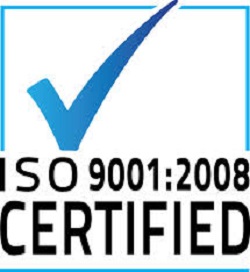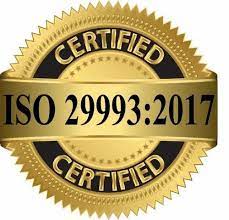


AAFM Basics on Investing, Financial Markets and Financial Planning
By George S. Mentz, JD, MBA
Guide to Financial Statements . 3 Financial Statement Ratios and Calculations . 8 Figuring Out Your Finances . 10 KNOW YOUR INCOME AND EXPENSES . 11 Small Savings Add Up to Big Money . 12 Pay Off Credit Card or Other High Interest Debt12 Mutual Funds Without Active Management17 Watch "Turnover" to Avoid Paying Excess Taxes . 17 Selecting a Financial Professional18 What If I Have a Problem? . 19 What Is a Variable Annuity? . 20 How Variable Annuities Work . 21 The Death Benefit and Other Features . 22 Tax-Free “1035” Exchanges . 25 Ask Questions Before You Invest27 The Basics of Treasury Securities . 28 What You Need to Know About Trading In Fast-Moving Markets . 32 Online trading is quick and easy, online investing takes time . 33 Set your price limits on fast-moving stocks: market orders vs. limit orders . 33 Online trading is not always instantaneous . 33 Know your options for placing a trade if you are unable to access your account online . 34 If you place an order, don't assume it didn't go through . 34 If you cancel an order, make sure the cancellation worked before placing another trade . 34 If you purchase a security in a cash account, you must pay for it before you can sell it34 If you trade on margin, your broker can sell your securities without giving you a margin call34 No regulations require a trade to be executed within a certain time . 35 What To Do If You Have a Complaint35 Stocks and Financial Research . 35 Getting Info About Companies . 36 Other Types of Information . 36 Advantages and Disadvantages . 39 How to Buy and Sell Shares . 42 How Funds Can Earn Money for You . 42 Looking Beyond a Fund's Name . 50 Bank Products versus Mutual Funds . 50 Glossary of Key Mutual Fund Terms . 51 Home Mortgages and Loans for your Home . 58 How the USA Economy Works . 66 The USA Stock Markets and Financial Markets . 75
Guide to Financial Statements
The BasicsIf you can read a nutrition label or a baseball box score, you can learn to read basic financial statements. If you can follow a recipe or apply for a loan, you can learn basic accounting. The basics aren’t difficult and they aren’t rocket science. This brochure is designed to help you gain a basic understanding of how to read financial statements. Just as a CPR class teaches you how to perform the basics of cardiac pulmonary resuscitation, this brochure will explain how to read the basic parts of a financial statement. It will not train you to be an accountant (just as a CPR course will not make you a cardiac doctor), but it should give you the confidence to be able to look at a set of financial statements and make sense of them. Let’s begin by looking at what financial statements do. “Show me the money!”We all remember Cuba Gooding Jr.’s immortal line from the movie Jerry Maguire, “Show me the money!” Well, that’s what financial statements do. They show you the money. They show you where a company’s money came from, where it went, and where it is now. There are four main financial statements. They are: (1) balance sheets; (2) income statements; (3) cash flow statements; and (4) statements of shareholders’ equity. Balance sheets show what a company owns and what it owes at a fixed point in time. Income statements show how much money a company made and spent over a period of time. Cash flow statements show the exchange of money between a company and the outside world also over a period of time. The fourth financial statement, called a “statement of shareholders’ equity,” shows changes in the interests of the company’s shareholders over time. Balance SheetsA balance sheet provides detailed information about a company’s assets, liabilities and shareholders’ equity. Assets are things that a company owns that have value. This typically means they can either be sold or used by the company to make products or provide services that can be sold. Assets include physical property, such as plants, trucks, equipment and inventory. It also includes things that can’t be touched but nevertheless exist and have value, such as trademarks and patents. And cash itself is an asset. So are investments a company makes.
|
Join our Linkedin Group The GAFM ® Board is the 1st Graduate Certification Body to Become Accredited and Certified for: ISO 9001 Quality and ISO 21001 Training in the World. GAFM ® owns the former AAFM ® Certifications and Programs
|
|

Home About Certifications Board Board Register Recognition Requirements Providers Contact Us Contact Apply AFAPPC GetCertifiedPPC Benefits Chartered Wealth Manager News IAF CERT How To Use Stock Markets Training Calendar FINRA Application Reg. Payments About Old Events CWM Training Program News UBT University Business Technology Saudi Arabia Saudi Arabia - Certification Training Programs 2017 - University Business & Technology CEO Message Chartered Certified Economist Certified Financial Analyst FINRA SEC Chartered Wealth Manager Training Indonesia Malaysia Guides Informa GAFM Guides Jamaica Qualifying Degrees Global Advisors Membership Mission Ethics Governmental Recognition Links Handbook mfm Financial Planner Program Chartered Economist CCO Higher Institute IP List Become Provider Management Consulting Jobs TUV Accreditation CWM Chartered Wealth Manager Terms Financial Analyst Certification Copy of Certification Economics Certification Economics Degrees Management Degrees Finance Degrees Accounting Degrees Exams Renew Certification Awards Sample Honor Society Trademarks Careers Complaint Site Map Mentz George Mentz Lawyer Mentz George Colorado USA Speaker Consultant AFA ® Accredited Financial Analyst Certification CTEP ® Trust and Estate Certification CIPM ® Certified International Project Manager CWM ® Chartered Wealth Manager ® AMA ® Management Accountant Certification AMC ® Management Consulting Certification MMC ® Management Consulting Certification Book







